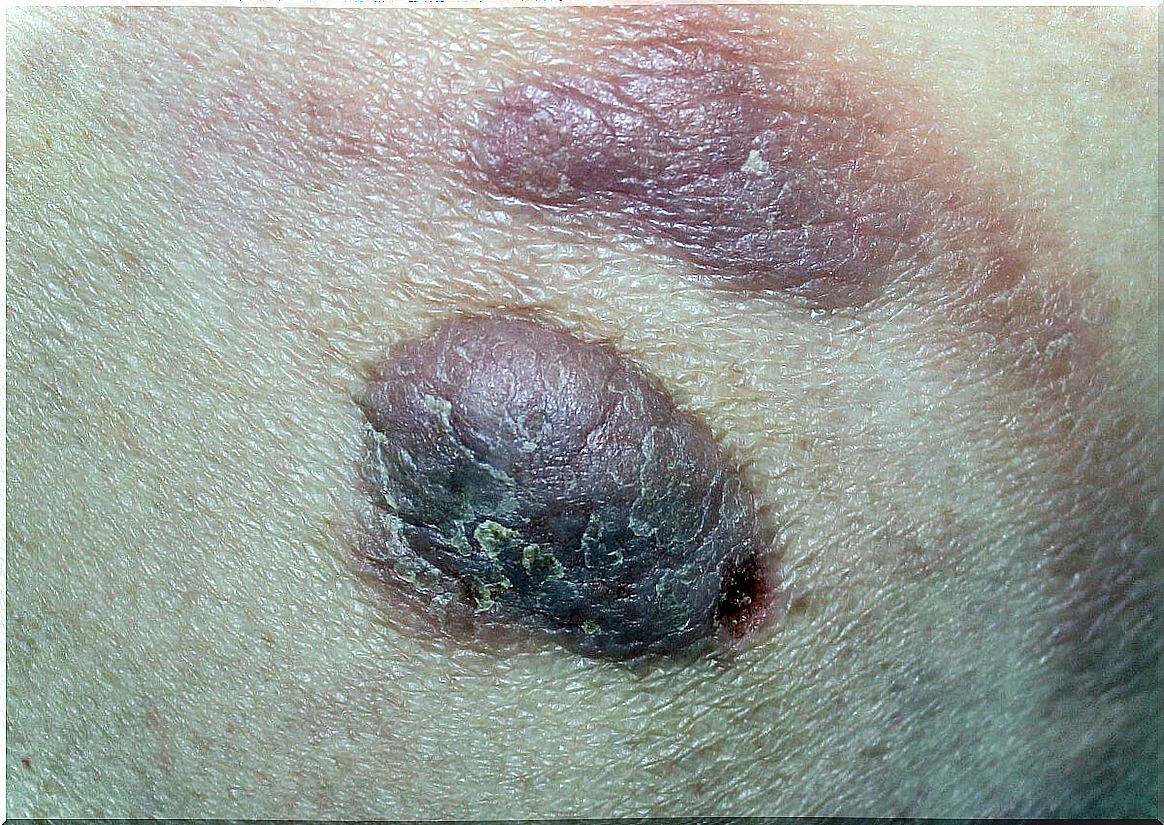What Should You Know About Cutaneous Lymphoma?
Cutaneous T-cell lymphoma (CTCL) is a type of cancer that, as its name suggests, begins in a type of white blood cell, that is, T lymphocytes. According to the American Cancer Society, B lymphocytes also They can be affected by this pathology, although the primary and most common presentation is the one already mentioned.
Cutaneous lymphoma presents, in most cases, under a disorder called mycosis fungoides. Of course, we are facing an atypical pathology that is difficult to approach, since its causes and clinical manifestations are still not entirely clear. Here we present, then, everything you need to know about the disorder.
What is cutaneous lymphoma?
As we have said before, cutaneous lymphoma is an atypical type of cancer that has its origin in lymphocytes (white blood cells). According to the National Cancer Institute (NIH), under normal conditions, the bone marrow produces the precursors of these cells that will differentiate to produce antibodies and fight infections.
In this general term for skin cancers, the protective cells develop abnormalities that cause them to attack the skin. The misdirected attack causes a series of different types of skin lesions, which can be found in two different clinical pictures: mycosis fungoides and Sézary syndrome (a more aggressive form).
It should be noted that this entire clinical cluster is encompassed within the group of non-Hodgkin’s lymphomas, that is, a group of diseases of the lymphatic system that includes all lymphomas, except Hodgkin’s. The latter is a much more studied and well-known pathology.
How is it distributed in the world?
There are epidemiological studies that put the global situation of this group of diseases into perspective. Some essential data are the following:
- The overall incidence of cutaneous lymphoma is 0.36 cases per 100,000 inhabitants per year.
- 80% of cutaneous lymphomas come from the clonal proliferation of T lymphocytes, with a very heterogeneous clinical and biological behavior.
We have little more information to provide worldwide, because as these bibliographic sources report, we are facing a pathology that has been a source of debate in the medical literature. It still poses detection problems in a good number of cases.

Symptoms
Official organizations, such as the Mayo Clinic, list some of the most common symptoms of cutaneous T-cell lymphoma. Although it is true that the clinical picture can be very diverse, we combine the usual signs below:
- Round spots on the skin.
- Bumps that form in the dermal tissue and can break open.
- Enlarged lymph nodes.
- Loss of hair.
- Rash and reddened skin all over the body.
As we can see, the presence of a red rash on the skin, which is itchy in 20% of cases, is a symptom of cutaneous lymphoma and, specifically, of mycosis fungoides. According to the NIH, this disease can present in four different stages:
- Premychotic stage: a reddish, scaly rash appears on parts of the body not exposed to the sun. It does not itch and may remain in the patient for months or years.
- Spotting phase: This rash gives rise to another rash similar to eczema.
- Plaque phase: There are a series of lumps (papules) or hard lesions on the skin.
- Tumor stage: tumors form on the skin.
Of course, the early stages of this disease are never associated with a carcinogenic process. In addition, depending on the type of lymphocyte affected, the clinical picture and the phases will vary. In any case, according to other scientific studies, they are pathologies of a slow and progressive course that affect the quality of life of the patient.
Causes
The exact causes of cutaneous lymphomas are not known. Cancer begins when DNA-level mutations occur in cells, but the underlying reason for this error in lymphocytes is not known. In the vast majority of cases the cause is also not believed to be genetic or hereditary.
Furthermore, according to professional books, a clear correlation between these tumor processes and exposure to harmful chemical agents has not been observed. Despite all this general ignorance, it has been recorded that they appear more in adults, over 20 years of age, and that they are more prevalent in men than in women.
Treatment
Various treatments can be used to treat skin lymphomas. According to sources already cited, photodynamic therapy, radiotherapy and chemotherapy are the ways to go. These procedures are intended to kill cancer cells and prevent their proliferation.
Accessory medications, such as corticosteroids or retinoids, can also be used, either to alleviate the symptoms of the sick patient or to delay the proliferation of cancer cells.

A little-known cancer: cutaneous lymphoma
As we have been able to see in these lines, we are facing a very little known type of cancer with an exceptional presentation. The chances of presenting this pathology are low, so in the face of a generalized rash, other causes than cancer are always more likely.
These diseases highlight the long way we still have to go as a society to understand the nature and causes of cancer. Of course, only time and science will give us answers.








